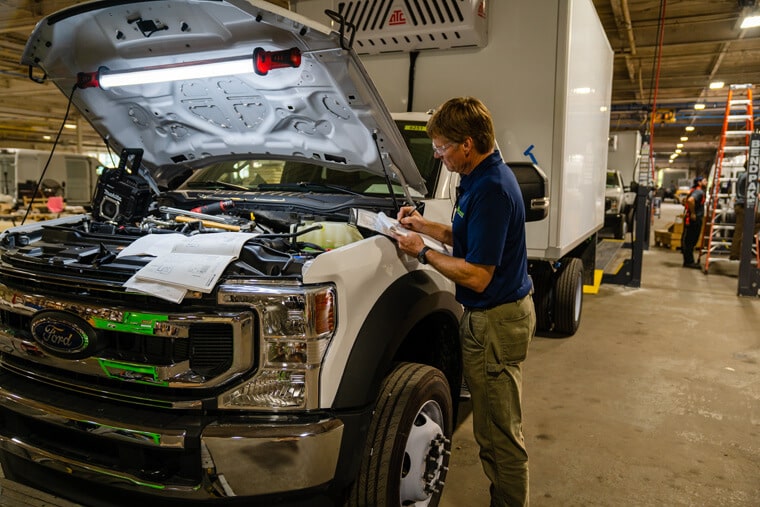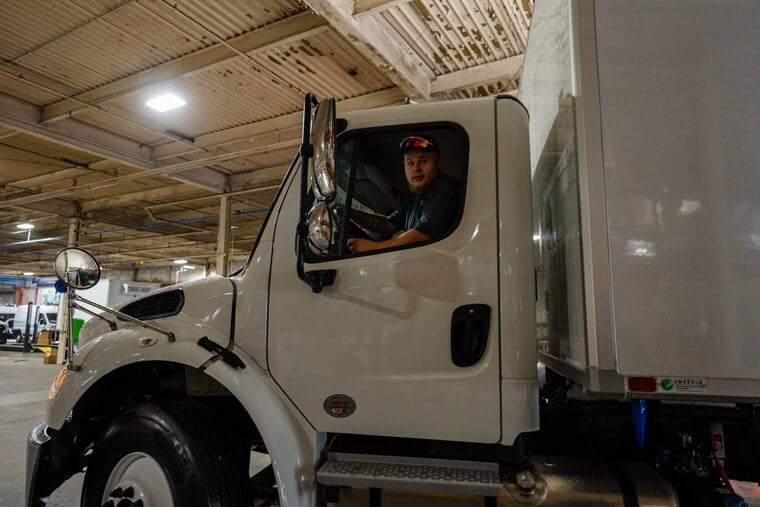
Interesting Statistics About Refrigerated Trucking
Joe Dickman | January 27th, 2022
Have you ever wondered how you’re able to buy fresh fruits, vegetables, and meats from the supermarket even though they may originate from sources thousands of miles away? It’s all thanks to the development of refrigerated trucking.
What began as ice cubes in the back of railway cars has grown into a booming and technologically marvelous industry. You wouldn’t be able to buy food supplied more than a few miles away if it weren’t for these unique vehicles. Here are some of the most interesting statistics about refrigerated trucking.
Refrigerated Trucking Is Big Business
The food and beverage industry is crucial to powering the U.S. economy, amounting to 5% of the country’s GDP. In the United States, you’ll find the food business currently valued at around $1.4 trillion in total sales. The food and beverage industry should continue growing and developing, resulting in an ever-increasing demand for refrigerated vehicles.
Refrigerated Transportation Originated in 1842
In 1842, refrigerated transportation first entered the scene in the form of chilled railway cars. At first, they could only transport products in ideal conditions during wintry weather. However, they started putting ice in the train cars when it wasn’t frigid outside until the first ice trucks began rolling out in 1910.
Food Was Impossible To Transport Before Refrigerated Trucking
Shipping food was a nightmare until the development of refrigerated transportation. Food could only go around 50 miles from the farm where animals lived. Truckers could only ensure fresh meat across long distances hauling live cows. Unfortunately, many cows died or lost too much weight during the journey.
The Demand for Frozen Food Is Growing
Due to increased sedentary lives due to being stuck indoors, people are eating more frozen food than ever before. Furthermore, busy work schedules necessitate quick and simple meal preparation, thus expanding the market for frozen foods even further. As a result, the need for refrigerated trucking has skyrocketed.
The Cold Supply Chain in General Is Booming
As the demand for safely transporting vaccines continues to grow, the pharmaceutical sector is experiencing a surge in demand for refrigerated trucks. The cold chain industry will likely surpass 3.25 billion tons of cargo by 2022, indicating rapid demand development. This development is also due to the rise in demand for organic foods, dairy, and meat packaging.
Key Takeaway
These interesting statistics about refrigerated trucking shed plenty of light on the importance of these vehicles to our economy and our way of life. Remember this info the next time you see a food delivery truck on the road; it’s the reason you have so much food at the store.
Emerald Transportation Solutions offers refrigerated catering vans for sale that are perfect for business owners in catering or restaurant industries who want to be able to quickly and safely pick up and drop off food. Feel free to contact us with any questions about our products.
Related Articles
Contact Us
Feel Free To Contact Us If You Have Any Questions
What does under DOT mean?
Questions regarding DOT requirements come up often. 10,000 lbs GVW (gross vehicle weight) and over are commercial vehicles that fall under the Department of Transportation regulatory requirements.
What is the difference between GVW and payload?
GVW or Gross Vehicle Weight is the entire weight of the vehicle including the payload. The payload weight represents the amount of cargo you are hauling.
What is a self-powered unit and a vehicle-powered unit?
A self-powered unit has its own fuel source and will run independent of the truck. This is the heaviest and most expensive option. While vehicle-powered units run off the engine via a compressor mounted on the engine. These are less expensive and lighter in weight but you must run the truck or plug the electric standby into shore power.
What does K-factor mean and why is that important?
K-factor is a term that stands for the overall insulating value of the container (truck body). Quite simply the lower the K-factor the better the truck body will be able to maintain a given temperature and require less energy to do so.
How much lighter is a Poly Van vs a US spec body?
Poly Van bodies are very light. On average we estimate we are 75-150 lbs per foot lighter than a traditional sheet and post foamed in place body. These weight savings translates to less fuel burn and less CO2 emissions, along with added payload, the most important benefit.





